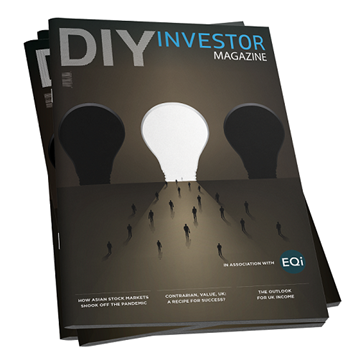How Asian stock markets shook off the pandemic


By Matthew Dobbs, Fund Manager, Asian Equities and Head of Global Small Cap and Richard Sennitt, Fund Manager, Pacific Equities and Global Small Cap Features
Asian shares have benefited from the region’s effective handling of the pandemic, but what comes next?
It seems ancient history now, but 2020 opened with a high degree of optimism for Asian markets. True, valuations were no more than reasonable given the share price gains of the previous twelve months, but conditions appeared favourable and there was a widespread consensus on a global economic recovery and a strong year ahead for corporate earnings. Well, it is obvious in hindsight that Mr Market was wrong – or was he?
The fact is that for those who held their nerve in the spring (and even more for those who used that turmoil to pick up cheap bargains and great companies being thrown out in the panic) it turned out to be a vintage year.
All in all, 2020 was an extreme example of cutting through the noise and focusing on the long term.
Asia rises to the challenge
Of course, it is never simple. The spring months seemed to present an existential threat perhaps even to humanity itself, a “Day of the Triffids” moment.
As it turned out, Asia has proved well up to the challenge.
‘2020 was an extreme example of cutting through the noise and focusing on the long term’
Many of the more advanced Asian economies have dealt with the pandemic efficiently and effectively. Those who cite different culture and a more conformist mindset might want to reflect on the large scale events taking place in many countries in the region, even if crowds have temporarily been kept away from the Australian Open.
If the US had emulated Taiwan in the minimisation of fatalities, only some 100 US citizens would have died against the over 400,000 that have.
Of course, not every Asian country has the resource and institutional depth to respond, but in the case of India and much of the ASEAN region, young populations are proving resilient (ASEAN is the Association of Southeast Asian Nations).
Going virtual
Asia was also remarkably adept at re-invigorating and adjusting supply chains. While economies exposed to services (fluff rather than stuff) suffered as travel, tourism, bricks and mortar retail collapsed, hard exports (i.e. goods) have been surprisingly strong.
With inventories lean, corporate earnings have proved at the least resilient and in some cases remarkably robust. This has been particularly true in the information technology complex as the world has gone virtual: virtual work, virtual play, virtual shopping, virtual everything.
‘virtual work, virtual play, virtual shopping, virtual everything’
Adding to the mix has been a very benign global liquidity backdrop, led by the US Federal Reserve whose asset purchases and low interest rates have helped support the financial system. This has been accompanied by extraordinary levels of fiscal activism with governments supporting people’s incomes.
A weak dollar has added to the fuel, as has a rise in thematic investing, driven in part by the fact that the pandemic has only served to further accelerate digitalisation trends already firmly in train.
Asian stock markets have ample representation of companies that benefit: computer gaming, e-payments, e-commerce, electric vehicles, as well as the enablers of the new trends such as specialists in robotics, artificial intelligence, and semiconductor testing and production.
A long-term case for Asia
The above perhaps is history. But to understand where we are going, it helps to understand where we have been.
We remain convinced of the long-term case for Asia, and that is in the knowledge of the less good things that have intervened including continued tension between the US and China (a fact of life) and the many political fissures (Hong Kong, North Korea, Myanmar).
‘We remain convinced of the long-term case for Asia’
The shorter-term outlook looks less enticing. Valuations are overall somewhat stretched, so the expected recovery in corporate earnings appears to be already well recognised by the consensus. And as we know, earnings very frequently disappoint. Furthermore, the very fact that Asia has had a “good war” over Covid means there is not the same degree of recovery potential as is possibly present elsewhere.
We would also expect most regional monetary and fiscal authorities to continue a relatively conservative stance, led by China which has recently signalled some concern over exuberant markets.
In our view, they are right given distinctly “bubble-like” valuations in areas such as bio-technology and electric vehicle manufacturers.
Think differently from the crowd
In summary, we are working on the assumption of more measured progress for the region in 2021. Investors may have to work harder for positive returns as some of the long-term growth companies need to grow into their valuations.
There are also pockets of value and we see opportunities in areas that have not captured the imagination of the Robinhood brigade. As ever we are prepared to be patient, think differently from the crowd, and focus on long-term sustainability.
More information about the Schroder AsiaPacific Fund plc here >
More information about the Schroder Oriental Income Fund Limited here >
To buy these funds login to your EQi account
Select Schroder AsiaPacific Fund Plc – GB0007918872
Select Schroder Oriental Income Fund Ltd – GB00B0CRWN59
Important information
This communication is marketing material. The views and opinions contained herein are those of the named author(s) on this page, and may not necessarily represent views expressed or reflected in other Schroders communications, strategies or funds.
Past Performance is not a guide to future performance. The value of investments and the income from them may go down as well as up and investors may not get back the amounts originally invested. Exchange rate changes may cause the value of any overseas investments to rise or fall.
Any sectors, securities, regions or countries shown above are for illustrative purposes only and are not to be considered a recommendation to buy or sell.
The forecasts included should not be relied upon, are not guaranteed and are provided only as at the date of issue. Our forecasts are based on our own assumptions which may change. Forecasts and assumptions may be affected by external economic or other factors.
Issued by Schroder Unit Trusts Limited, 1 London Wall Place, London EC2Y 5AU. Registered Number 4191730 England. Authorised and regulated by the Financial Conduct Authority.
Read the latest edition of DIY Investor Magazine
DIY Investor Magazine
The views and opinions expressed by the author, DIY Investor Magazine or associated third parties may not necessarily represent views expressed or reflected by EQi.
The content in DIY Investor Magazine is non-partisan and we receive no commissions or incentives from anything featured in the magazine.
The value of investments can fall as well as rise and any income from them is not guaranteed and you may get back less than you invested. Past performance is not a guide to future performance.
DIY Investor Magazine delivers education and information, it does not offer advice. Copyright© DIY Investor (2016) Ltd, Registered in England and Wales. No. 9978366 Registered office: Mill Barn, Mill Lane, Chiddingstone, Kent TN8 7AA.
